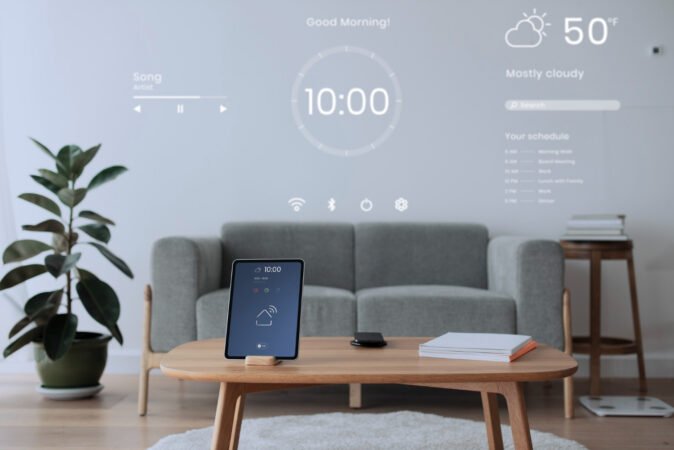Everything you should know about smart thermostats (price, installation, maintenance, type, lifespan, advantages, disadvantages, questions, solutions etc.)
Everything you should know about Smart Thermostats!
As the cost of utilities keeps going up, more and more homeowners are using smart thermostats to save money. These devices look better than traditional thermostats, and they have a lot of features that help you use your heating and cooling systems more efficiently, which can save you a lot of money on your energy bills. But before you buy one, you should know what a smart thermostat is and why you might want to get one for your home. Let’s take a closer look at these versatile gadgets and see how they stack up against other options on the market.
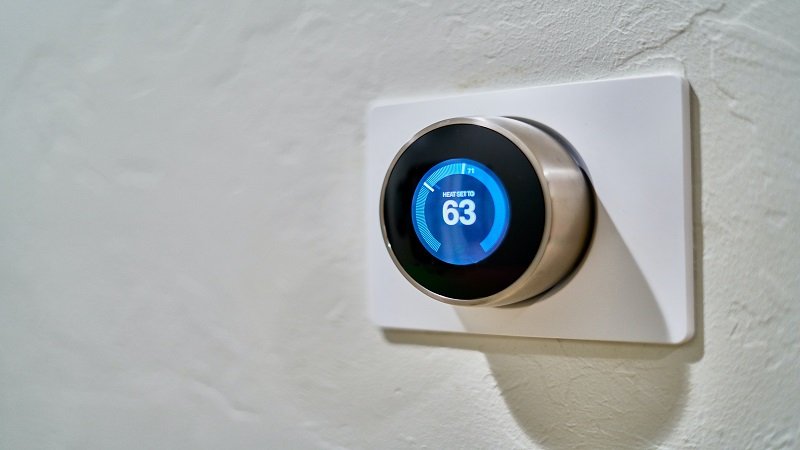
What is a Smart Thermostat?
A smart thermostat is a device that lets you control your home’s heating and cooling system from afar using devices like your phone, tablet, or smart speaker. These new thermostats allow you to set and change temperature schedules to match your needs and work well with other smart home devices. Additionally, smart thermostats often have sleek, modern designs, which is a big change from the old, bulky thermostats.
Smart thermostats are like smart assistants for your heating and cooling system. They can learn your habits and adjust the temperature automatically to save you energy and money. Some smart thermostats can even detect problems with your HVAC system and send you alerts.
Here are some of the cool things smart thermostats can do:
- Learn your heating and cooling habits and make automatic adjustments to save you energy.
- Detect problems with your HVAC system and send you alerts.
- Remind you when it’s time to replace your air filter.
- Provide insights into your energy consumption.
- Measure the temperature in specific areas of your home and adjust the heating or cooling accordingly.
- Recognize when you’re home and optimize heating and cooling to reduce energy costs while you’re away.
If you’re looking for a way to save energy and money, a smart thermostat is a great option.
How does a smart thermostat work?
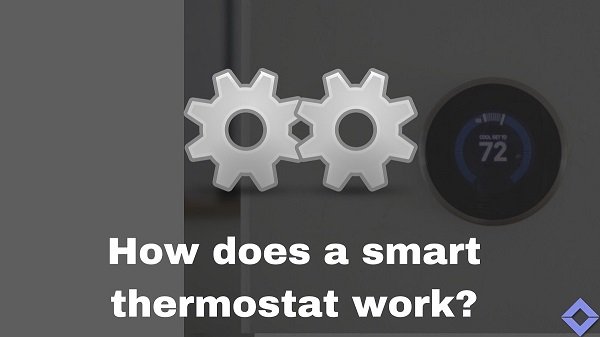
To understand how a smart thermostat works, it’s helpful to first know how a regular thermostat works. A regular thermostat uses temperature readings to decide when to turn on or off the fan and heating or cooling systems. It’s like a light switch, but with temperature instead of light. A regular thermostat has several wires, including a hot wire, a common wire, a wire to the fan blower, and wires to the heating and cooling systems. Sometimes there may be extra wires for things like auxiliary heat, emergency heat, two-stage heating or cooling, or for systems with separate AC or heating units.
When you set a temperature on your thermostat, the fan and heating or cooling systems turn off once the inside thermometer reaches the temperature you set. Smart thermostats work the same way, but they also connect to your home’s Wi-Fi network. This lets you change the thermostat settings from a remote location using a companion app. When you enter a temperature setting into the app, it sends this information over your Wi-Fi network to the thermostat. The thermostat then tells the blower and heating or cooling system what to do.
For example, if you have a smart speaker like Google Home and you say, “Hey Google, set the temperature to 70 degrees,” the Google Home app sends this command to the thermostat’s companion app. The companion app then sends the command over your Wi-Fi network to the thermostat. This whole process happens so quickly that you may not even realize all the different parts that are working together to make it happen.
Is it worth getting a Smart Thermostat?

Investing in a smart thermostat can be worthwhile for several reasons. Firstly, it allows for convenient remote temperature control via a smartphone or other compatible devices, enabling you to adjust settings even when you’re away from home. This feature can contribute to energy savings by ensuring that your heating or cooling systems are not running unnecessarily when you’re not there. Additionally, many smart thermostats come with advanced programming capabilities and learning algorithms that can optimize energy usage based on your patterns and preferences, potentially leading to long-term cost savings on utility bills.
Moreover, some smart thermostats provide detailed energy usage reports and insights, helping you to track and manage your energy consumption more effectively. They may also integrate with other smart home devices, allowing for a comprehensive and streamlined home automation system. Overall, the convenience, potential energy savings, and integration with other smart devices make the investment in a smart thermostat a worthwhile consideration for those looking to improve their home’s energy efficiency and overall comfort.
| Features | Benefits |
|---|---|
| Remote control | Adjust temperature from anywhere, even when away from home. |
| Energy savings | Reduce energy consumption by preventing heating or cooling systems from running unnecessarily. |
| Learning algorithms | Optimize energy usage based on user patterns and preferences. |
| Energy usage reports | Track and manage energy consumption more effectively. |
| Smart home integration | Create a comprehensive and streamlined home automation system. |
Does a thermostat need a WI-FI?
A regular a thermostat does not necessarily require Wi-Fi to function. Traditional thermostats, which operate using manual controls or programmed settings, do not rely on Wi-Fi connectivity. They regulate the temperature in a more basic manner, often through mechanical or simple electronic means.
But, a smart thermostat typically requires a Wi-Fi connection to fully utilize its features and functionalities. The Wi-Fi connection enables you to remotely control and program the thermostat using a companion app on your smartphone or other smart devices. It also allows for features such as voice control through smart speakers and the ability to receive software updates. While some smart thermostats may offer basic functionality without Wi-Fi, their full potential is unlocked when connected to a Wi-Fi network.
What to look when buying a thermostat?
When purchasing a thermostat, there are several factors to consider to ensure you select the right one for your needs:
- Compatibility: Make sure the thermostat works with your heating and cooling system. Check the type of system you have and if the thermostat supports it.
- Wired or wireless: Decide if you want a thermostat that is connected to your HVAC system with wires or one that connects wirelessly. Wireless thermostats can be controlled from your phone or with voice commands.
- Programmability: Decide if you want a thermostat that lets you set schedules for heating and cooling. Some thermostats have advanced scheduling options for different days and times.
- Smart features: Smart thermostats can be controlled from your phone, learn your habits, and work with voice assistants like Alexa or Google Home. They can also show you how much energy you’re using.
- User interface: Check the thermostat’s display and controls. Some have touchscreens, while others have simpler interfaces. Make sure it’s easy to use and like you want it to look.
- Home automation: If you have a home automation system, make sure the thermostat can work with it, such as Apple HomeKit or Samsung SmartThings.
- Geofencing: Some smart thermostats can use geofencing to adjust the temperature based on where you are. This can help you save energy when you’re away from home.
- Energy efficiency: Look for an ENERGY STAR-certified thermostat to make sure it meets energy efficiency standards and can help you save money on energy bills.
- Zoning: If you have multiple heating or cooling zones in your home, consider a thermostat that supports zoning for better control.
- Installation: Decide if you’re comfortable installing the thermostat yourself or if you need a professional to do it.
- Cost: Set a budget and compare different thermostats within your price range. Remember that smart thermostats tend to be more expensive but can save you money on energy bills in the long run.
- Customer reviews: Read reviews and ratings from other users to get an idea of how the thermostat works in the real world and how reliable it is.
- Warranty: Check the manufacturer’s warranty to make sure you’re covered if the thermostat malfunctions or breaks.
By considering these factors, you can choose a thermostat that meets your specific needs and helps you manage your home’s heating and cooling systems efficiently.
Click here to read more about choosing a smart thermostat.
How much does a smart thermostat increase home value?
Whether a smart thermostat will increase the value of your home depends on a few things, such as the housing market in your area, the features of the thermostat, and what buyers are looking for.
Smart thermostats are usually seen as a good addition to modern homes because they can save energy and make things easier. They can help lower energy costs and make your home more automated, which may appeal to buyers who care about the environment or want a tech-savvy home. However, it’s important to remember that a smart thermostat is unlikely to significantly raise the overall value of your home. Other factors, such as the location, size, condition, and overall quality of the home, will have a bigger impact on its value.
If you’re thinking about installing a smart thermostat to increase the value of your home, it’s a good idea to talk to a local real estate agent or appraiser. They can give you insights into the specific market conditions in your area and how different home upgrades, including smart technology, can affect property values.
Is there any monthly fees for a smart thermostat?
Whether or not there is a monthly fee for a smart thermostat depends on the brand and model of the thermostat. Some thermostats, such as the Nest Learning Thermostat and the Ecobee Smart Thermostat, do not require a monthly fee. However, others, such as the Honeywell Home T9 Smart Thermostat and the Emerson Sensi Touch Wi-Fi Thermostat, do require a monthly fee to access certain features.

The features that are typically included with a monthly subscription include:
- Remote access and control: The ability to adjust the thermostat settings from anywhere in the world using a smartphone, tablet, or computer.
- Advanced scheduling: The ability to create complex schedules that take into account your daily routine and preferences.
- Energy reports: Detailed reports on your energy usage, which can help you identify areas where you can save energy.
- Weather-based scheduling: The ability to automatically adjust the thermostat settings based on the current weather conditions.
- Smart home integration: The ability to connect the thermostat to other smart home devices, such as lights, locks, and security systems.
| Thermostat | Monthly fee | Features included with monthly subscription |
|---|---|---|
| Nest Learning Thermostat | No | None |
| Ecobee Smart Thermostat | No | None |
| Honeywell Home T9 Smart Thermostat | Yes | Remote access and control, advanced scheduling, energy reports, weather-based scheduling, smart home integration |
| Emerson Sensi Touch Wi-Fi Thermostat | Yes | Remote access and control, advanced scheduling, energy reports |
If you are considering purchasing a smart thermostat, it is important to compare the features and pricing of different models to find one that meets your needs and budget.
Can I install a thermostat myself?
Yes, you can install a thermostat yourself if you are comfortable working with electrical wiring. However, it is important to be aware of the risks involved and to take the necessary safety precautions. If you are not comfortable working with electrical wiring, it is always best to hire a qualified professional.
Here are some of the things you will need to do to install a thermostat:
- Turn off the power to the HVAC system at the breaker box.
- Remove the old thermostat from the wall.
- Label the wires so you can remember where they go.
- Connect the wires to the new thermostat.
- Mount the new thermostat on the wall.
- Turn on the power to the HVAC system.
- Test the thermostat to make sure it is working properly.
If you are unsure about any of the steps involved in installing a thermostat, it is best to consult a qualified professional.
Here are some of the benefits of installing a thermostat yourself:
- Save money on labor costs
- Learn how to work with electrical wiring
- Gain a sense of accomplishment
Here are some of the risks of installing a thermostat yourself:
- Electrical shock
- Fire
- Damage to the HVAC system
- Voiding the warranty on the thermostat
If you decide to install a thermostat yourself, be sure to follow the instructions that come with the thermostat carefully. And if you have any doubts, don’t hesitate to consult a qualified professional.
Do smart thermostats lower the electricity bill?
Smart thermostats can be a wise investment for those seeking to reduce their electricity bills. By learning your habits and adjusting temperatures accordingly, these devices can minimize energy consumption during unoccupied periods. Additionally, smart thermostats provide remote access and control, allowing you to make changes even when you’re away from home. This can be particularly beneficial for preventing unnecessary heating or cooling while on vacation or during extended workdays.
Furthermore, some smart thermostats offer insights into energy usage patterns, enabling you to identify areas where further savings can be achieved. Overall, the potential cost savings associated with smart thermostats make them a compelling option for homeowners seeking to lower their electricity bills.
How much WI-FI does a smart thermostat use?
Smart thermostats are incredibly efficient when it comes to Wi-Fi usage. On average, a smart thermostat will only consume around 50 megabytes (MB) of data per month. This is equivalent to streaming a few minutes of music or browsing a few web pages. The amount of data used can vary depending on the thermostat’s features and how often it is used. However, even thermostats with advanced features such as remote access and weather-based scheduling will typically use less than 100 MB of data per month.
In comparison, a typical smartphone can use several gigabytes (GB) of data per month. This is because smartphones are used for a wide variety of activities that require large amounts of data, such as streaming video, downloading apps, and browsing the web.
So, if you are concerned about the impact of a smart thermostat on your Wi-Fi usage, you can rest assured that it will have a minimal impact. In fact, the energy savings you achieve from using a smart thermostat are likely to far outweigh any additional costs associated with Wi-Fi data usage.
How much does it cost to install a smart thermostat?
The cost of installing a smart thermostat can vary depending on the complexity of the installation and the hourly rate of the installer. However, in general, homeowners can expect to pay between $100 and $300 for professional installation. If you are comfortable working with electrical wiring, you may be able to install the thermostat yourself, which would save you the cost of labor. However, it is important to be aware of the risks involved and to take the necessary safety precautions.
In addition to the cost of installation, you will also need to factor in the cost of the thermostat itself. Smart thermostats can range in price from $50 to $300 or more. However, it is important to remember that the upfront cost of a smart thermostat can be offset by the potential savings on your energy bills.
Overall, the cost of installing a smart thermostat is a relatively small investment that can lead to significant savings over time. If you are looking for a way to reduce your energy consumption and lower your electricity bills, a smart thermostat is a great option to consider.
What is the cheapest way to set your thermostat?
The most cost-effective way to set your thermostat is to program it to adjust temperatures based on your occupancy and activities. By setting different temperatures for when you are home, away, and asleep, you can minimize energy consumption during unoccupied periods. Additionally, consider implementing setback and recovery settings, which allow you to temporarily lower or raise the temperature during certain times of the day.
Furthermore, taking advantage of natural heating and cooling sources, such as opening windows on cooler days or closing curtains on warmer days, can further reduce your reliance on artificial heating and cooling. By implementing these strategies, you can significantly lower your thermostat-related energy costs without sacrificing comfort.
Why would I want a smart thermostat?
In today’s fast-paced world, convenience is king. A smart thermostat grants you the ability to control your home’s temperature from anywhere in the world, with just a few taps on your smartphone. No more rushing home to adjust the thermostat before heading out, or fretting about whether you left the heat or AC on. With a smart thermostat, you can ensure that your home is always at the perfect temperature, no matter where you are.
But convenience is just the beginning. Smart thermostats can also help you save money on your energy bills. By learning your habits and preferences, they can automatically adjust the temperature to minimize energy consumption. And with detailed energy reports, you can see exactly where your energy is going, and make changes to further reduce your usage.
So if you’re looking for a way to make your home more comfortable, convenient, and energy-efficient, a smart thermostat is the perfect solution.
What is average cost of a smart thermostat?
The average cost of a smart thermostat can vary depending on the brand, model, and features offered. However, most smart thermostats fall within the range of $100 to $300. Entry-level models typically offer basic features such as remote access and scheduling, while more advanced models may include features such as geofencing, voice control, and room sensors.
In addition to the cost of the thermostat itself, there may also be installation costs to consider. If you are comfortable working with electrical wiring, you may be able to install the thermostat yourself. However, if you are not comfortable working with electrical wiring, you will need to hire a qualified professional to install the thermostat for you. The cost of installation will vary depending on the complexity of the installation and the hourly rate of the installer.
Overall, the cost of a smart thermostat is a wise investment for homeowners seeking to improve their home’s energy efficiency and comfort. The potential savings on energy costs can quickly offset the initial investment, making smart thermostats a cost-effective way to improve your home.
| Smart Thermostat Category | Price Range |
|---|---|
| Basic Models | $100 – $150 |
| Mid-Range Models | $150 – $200 |
| High-End Models | $200 – $250+ |
Can I replace my thermostat with a smart thermostat?
You can replace your existing thermostat with a smart thermostat. In fact, it is a relatively straightforward process that can be completed by most homeowners with basic DIY skills. However, it is important to note that there are a few things you will need to do to ensure a successful installation.
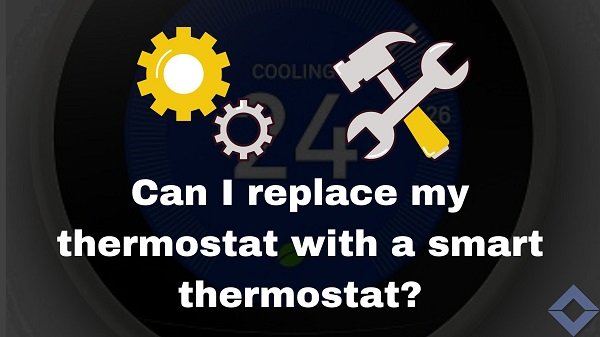
First, you will need to determine the compatibility of your HVAC system with smart thermostats. Most modern HVAC systems are compatible with smart thermostats, but there are a few exceptions. You can usually find this information in the owner’s manual for your HVAC system.
Then you can follow the steps which are mentioned above – ‘Can I install a thermostat myself?’
Do you need an electrician to install a smart thermostat?
Whether or not you need an electrician to install a smart thermostat depends on your comfort level with electrical wiring. If you are familiar with basic electrical principles and have the necessary tools, you may be able to install the thermostat yourself. However, if you are unsure of your abilities or are not comfortable working with electricity, it is always best to hire a qualified professional.
Do smart thermostats need special wiring?
Smart thermostats typically require a five-wire configuration, which includes a common wire (C-wire) in addition to the standard red, white, green, and yellow wires. The C-wire provides constant power to the thermostat, enabling it to maintain its settings and connectivity even when the heating or cooling system is not in use.
If your existing thermostat does not have a C-wire, there are a few options available. In some cases, an unused wire may be tucked away in the wall behind the thermostat. If no unused wire is present, a C-wire adapter can be installed to provide the necessary power. Alternatively, some smart thermostats can operate on battery power, but this may limit their functionality.
To determine if your existing wiring is compatible with a smart thermostat, it is best to consult the installation instructions for the specific model you are considering. If you are unsure about the wiring in your home, it is always advisable to hire a qualified electrician to assess the situation.
Can you install a smart thermostat on an old HVAC?
While compatibility concerns may arise, installing a smart thermostat on an older HVAC system is not entirely out of the question. The crucial factor lies in ensuring that the thermostat is compatible with the wiring and voltage requirements of the existing system. In some cases, a C-wire, or common wire, may be necessary to provide adequate power to the smart thermostat. If the older HVAC system lacks a C-wire, an HVAC technician may be able to install one or provide alternative solutions.
Additionally, some smart thermostats are designed to work with a wider range of HVAC systems, making them more likely to be compatible with older models. By carefully researching compatibility and consulting with a qualified HVAC professional, homeowners can determine if installing a smart thermostat on their older HVAC system is a viable option.
How do I know if my HVAC can use a smart thermostats?
Determining compatibility between your HVAC system and a smart thermostat is a crucial step in ensuring seamless integration and optimal performance. To ascertain compatibility, consult your HVAC system’s manual or contact the manufacturer directly. They will be able to provide you with specific information regarding the compatibility of your system with various smart thermostats on the market.
In general, most modern HVAC systems are compatible with smart thermostats. However, there are some older systems that may not be able to support the advanced features of a smart thermostat. For instance, if your HVAC system does not have a C-wire (common wire), you may need to install one in order to power your smart thermostat.
If you are unsure about the compatibility of your HVAC system with a smart thermostat, it is always best to consult with a qualified HVAC technician. They can assess your system and make sure that it is compatible with the smart thermostat you are considering.
Are smart thermostats difficult to install?
The installation of smart thermostats can vary in difficulty depending on the specific model and the existing wiring configuration. While some thermostats are designed for straightforward DIY installation, others may require the expertise of a qualified technician. Factors such as the presence of a C-wire, compatibility with existing wiring, and the need for additional tools or equipment can all impact the installation process.
For those comfortable working with electrical wiring, following the manufacturer’s instructions carefully can increase the chances of a successful DIY installation. However, if any uncertainty exists, it is always advisable to err on the side of caution and seek professional assistance. Ultimately, the decision of whether or not to self-install a smart thermostat should be based on individual comfort levels and electrical expertise.
What is the difference between a smart thermostat and a programable thermostat?
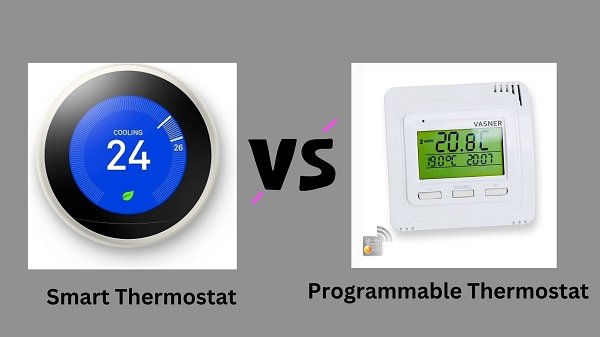
A programmable thermostat allows you to set different temperatures for different times of the day. For example, you could set it to lower the temperature at night when you’re sleeping and raise it in the morning when you wake up. This can help you save energy by not heating or cooling your home when you’re not using it.
A smart thermostat goes a step further by learning your habits and preferences. It can automatically adjust the temperature based on when you’re home and away, as well as the weather outside. This can help you save even more energy than a programmable thermostat.
What happenes if WI-FI goes out with smart thermostat?
In the event of a Wi-Fi outage, a smart thermostat will typically revert to its most basic functionality. This means that you will still be able to adjust the temperature manually using the thermostat itself. However, you will lose access to any advanced features that rely on an internet connection. For example, you will no longer be able to remotely control the thermostat using your smartphone or tablet. Additionally, you will not receive any notifications or updates from the thermostat.
Despite the loss of these features, your smart thermostat will still be able to maintain a comfortable temperature in your home. However, you may find that it is more difficult to manage your energy consumption without the assistance of these advanced features. As such, it is important to be aware of the limitations of smart thermostats in the event of a Wi-Fi outage.
Is WI-FI thermostat the same as a smart thermostat?
While all smart thermostats are Wi-Fi thermostats, not all Wi-Fi thermostats are smart thermostats. The key distinction lies in their respective capabilities. A Wi-Fi thermostat simply allows for remote control and scheduling via a smartphone or other internet-connected device. In contrast, a smart thermostat possesses the additional ability to learn and adapt to your usage patterns. This enables them to automatically adjust temperatures based on your occupancy, preferences, and even external factors such as weather conditions. As a result, smart thermostats have the potential to achieve greater energy savings than their Wi-Fi counterparts.
In essence, a Wi-Fi thermostat is akin to a remote control for your HVAC system, while a smart thermostat is akin to a self-driving car. Both offer convenience and flexibility, but only the latter can optimize performance and efficiency based on real-time data.
Is there a downside to smart thermostats?
While smart thermostats offer a plethora of advantages, there are a few potential downsides to consider. Firstly, their upfront cost can be significantly higher than traditional thermostats. Additionally, some models require a monthly subscription to access certain features. Furthermore, smart thermostats are reliant on a stable internet connection, and any disruptions can hinder their functionality.
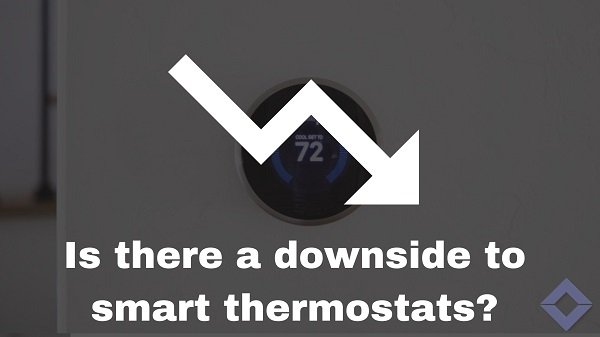
Moreover, concerns have been raised regarding the potential for security breaches, as smart thermostats collect and transmit data about users’ home heating and cooling habits. Finally, some users may find the learning curve associated with smart thermostats to be daunting, particularly those who are not tech-savvy.
Despite these potential drawbacks, smart thermostats remain a popular choice for homeowners seeking to enhance their home’s energy efficiency and comfort. By carefully weighing the pros and cons, consumers can make an informed decision about whether a smart thermostat is the right choice for their needs.
Are thermostats bad for HVAC?
Thermostats are not inherently bad for HVAC systems. In fact, they are essential for regulating temperature and ensuring optimal performance. However, poorly maintained or malfunctioning thermostats can lead to a number of problems, such as:
- Short cycling: This occurs when the thermostat rapidly turns the HVAC system on and off, causing unnecessary wear and tear on the equipment.
- Inaccurate temperature readings: This can result in the HVAC system running for longer than necessary, leading to increased energy consumption.
- Failure to communicate with the HVAC system: This can prevent the system from operating properly.
To avoid these problems, it is important to regularly maintain your thermostat and have it inspected by a qualified technician if you suspect any issues. Additionally, upgrading to a newer, more advanced thermostat can provide a number of benefits, such as improved energy efficiency and enhanced comfort.
In conclusion, thermostats are not bad for HVAC systems when properly maintained and operated. However, it is important to be aware of the potential problems that can arise if they are not functioning properly.
Do smart thermostats use a lot of electricity?
Smart thermostats consume minimal electricity, typically drawing less than 10 watts of power. In comparison, a standard incandescent light bulb consumes around 60 watts. The minimal energy consumption of smart thermostats is due to their use of low-power microprocessors and sensors. Additionally, many smart thermostats are designed to enter a low-power sleep mode when they are not in use. As a result, the impact of a smart thermostat on your electricity bill is negligible.
In fact, smart thermostats can actually help you save money on your electricity bill by reducing your overall energy consumption. By learning your habits and adjusting temperatures accordingly, smart thermostats can minimize energy usage during unoccupied periods. Additionally, smart thermostats can be programmed to automatically adjust temperatures based on weather conditions, further reducing energy consumption.
Overall, the benefits of using a smart thermostat far outweigh the minimal amount of electricity they consume. If you are looking for a way to save money on your electricity bill, a smart thermostat is a wise investment.
Do I need a smart thermostat in each room?
Whether or not you need a smart thermostat in each room depends on the layout and usage of your home. If you have a single zone heating and cooling system, a single smart thermostat can be sufficient. However, if you have a multi-zone system, or if you have rooms that are used infrequently, you may benefit from having a smart thermostat in each zone or room.
For example, if you have a home office that is only used during the day, you can program a smart thermostat in that room to automatically lower the temperature when you leave for work and raise it again when you return home. This can help you save energy and money on your heating and cooling bills.
Additionally, if you have a large home with multiple floors, you may find that it is difficult to maintain a comfortable temperature throughout the entire house with a single thermostat. In this case, having a smart thermostat in each zone can allow you to set different temperatures for different areas of your home.
Ultimately, the decision of whether or not to install a smart thermostat in each room is a personal one. However, if you are looking for ways to save energy and money on your heating and cooling bills, a smart thermostat can be a wise investment.
What are the concerns about smart thermostats?
Smart thermostats, while offering a plethora of benefits, have also raised concerns among some users. One primary concern is the potential for data breaches. As smart thermostats collect information about your home’s temperature patterns and occupancy schedules, this data could be compromised if not adequately secured. Additionally, some users worry that smart thermostats could be hacked, allowing unauthorized individuals to gain control over their home’s heating and cooling systems.
Furthermore, the environmental impact of manufacturing and disposing of smart thermostats is a concern for some, as these devices often contain hazardous materials. Ultimately, the decision of whether or not to use a smart thermostat is a personal one, and users should weigh the potential benefits against the associated concerns before making a decision.
| Concern | Description |
|---|---|
| Privacy and Data Security | Smart thermostats collect data on usage habits, posing potential privacy and data security risks. |
| Hacking and Cybersecurity | Vulnerability to hacking and unauthorized access may compromise home control and privacy. |
| Compatibility Issues | Some models may not be compatible with older HVAC systems, requiring costly upgrades. |
| Initial Cost | Smart thermostats can have a higher upfront cost compared to traditional thermostats. |
| Learning Curve | Complex features and settings may lead to a learning curve, potentially discouraging users. |
| Reliability | Dependence on the internet and third-party servers can make the system unreliable at times. |
| Dependence on Electricity | Smart thermostats require power, making them unusable during power outages. |
| Environmental Concerns | The production and energy usage of these devices can have an environmental impact. |
| Software Updates | Ongoing software updates are essential; obsolescence can lead to security risks and functionality loss. |
| Complex Installation | Installation may be more complex than traditional thermostats, possibly requiring professional help. |
How long do smart thermostats last?

The lifespan of a smart thermostat can vary depending on factors such as the brand, model, and usage. On average, a well-maintained smart thermostat can last anywhere from 5 to 10 years or more. However, some factors to consider include:
| Factor | Description |
|---|---|
| Build Quality | The quality of components and materials used in the thermostat can impact its overall lifespan. |
| Brand and Model | Reputable brands and models tend to offer longer-lasting and more reliable smart thermostats. |
| Software Support | Regular software updates are essential; discontinued support may shorten the thermostat’s useful life. |
| Usage Patterns | Frequent adjustments or extreme temperature fluctuations can impact how long a thermostat lasts. |
| Maintenance | Regular cleaning and maintenance can help prolong the thermostat’s lifespan by preventing performance issues. |
| Technology Advancements | Rapid technological advancements can lead to early upgrades as users seek newer, feature-rich models. |
Ultimately, while a smart thermostat can last 5 to 10 years or more, individual experiences may vary. It’s essential to follow the manufacturer’s recommendations for maintenance and consider upgrading if your thermostat no longer meets your needs or if it’s no longer receiving software updates and security patches.
Why is a smart thermostat is better than a regular thermostat?
Smart thermostats surpass their conventional counterparts in several ways. Firstly, their ability to learn and adapt to usage patterns enables them to optimize energy consumption, resulting in reduced utility bills. Secondly, remote access and control grant users the flexibility to adjust temperatures from anywhere, ensuring that heating or cooling systems are not operating needlessly during unoccupied periods.
Additionally, smart thermostats often provide insights into energy usage, empowering users to identify areas where further savings can be achieved. Furthermore, their integration with other smart home devices facilitates a more seamless and efficient management of energy consumption. In essence, smart thermostats transcend the limitations of regular thermostats by offering enhanced functionality, convenience, and potential cost savings.
How much money can be saved a year using a smart thermostat?
The amount of money that can be saved per year using a smart thermostat varies depending on a number of factors, such as the size of the home, the climate, and the individual’s energy usage patterns. However, studies have shown that smart thermostats can typically lead to energy savings of 8% to 15%. This translates to an average annual savings of $50 to $120 on electricity bills.
In addition to direct energy savings, smart thermostats can also help to reduce wear and tear on HVAC systems, leading to extended equipment lifespans and lower maintenance costs. Furthermore, the convenience and insights provided by smart thermostats can empower homeowners to make more informed decisions about their energy consumption, further contributing to potential savings.
Overall, smart thermostats represent a cost-effective way for homeowners to reduce their energy bills and environmental impact.
We hope we’ve answered most of your questions. If you have any other questions or comments, please let us know. We’ll do our best to answer them for you.
“Your feedback helps us understand what you are looking for in a blog post and how we can improve our content. We appreciate your time and effort in taking the time to leave a comment or share our blog post.”
If you like our post, please check out our other posts:
